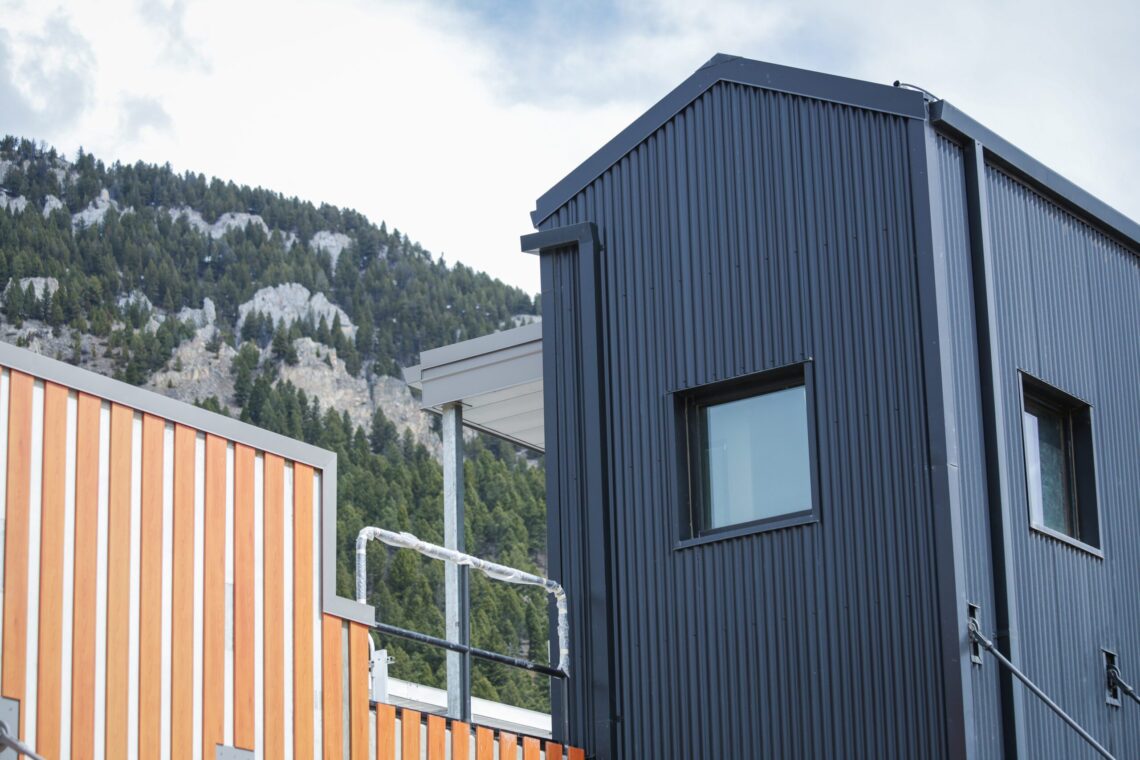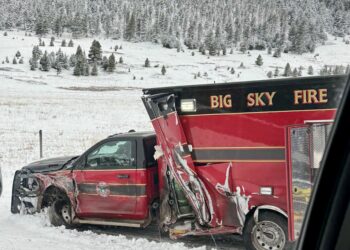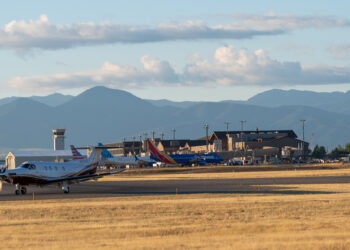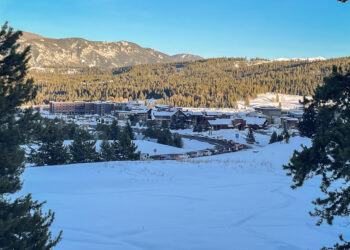$50 million facility will slash nitrogen output and increase treatment capacity
By Jack Reaney ASSOCIATE EDITOR
After more than six years of planning, three years of construction and roughly $50 million of community investment, Big Sky’s new wastewater treatment plant is finally live.
The Wastewater Resource Recovery Facility provides two significant improvements: it will increase treatment capacity and reduce the amount of nutrients in treated water. It’s a membrane bioreactor or “MBR” plant and has been constructed around the existing plant completed in 2004, a sequencing batch reactor or “SBR,” which will continue operating as an integrated part of the new WRRF.
Water began flowing into the plant on March 26, part of a slow process to feed and grow new bacteria which will digest nutrients from sewage. On April 16, the new WRRF officially began processing liquids—the most significant milestone of its phased opening which is expected to conclude in November.
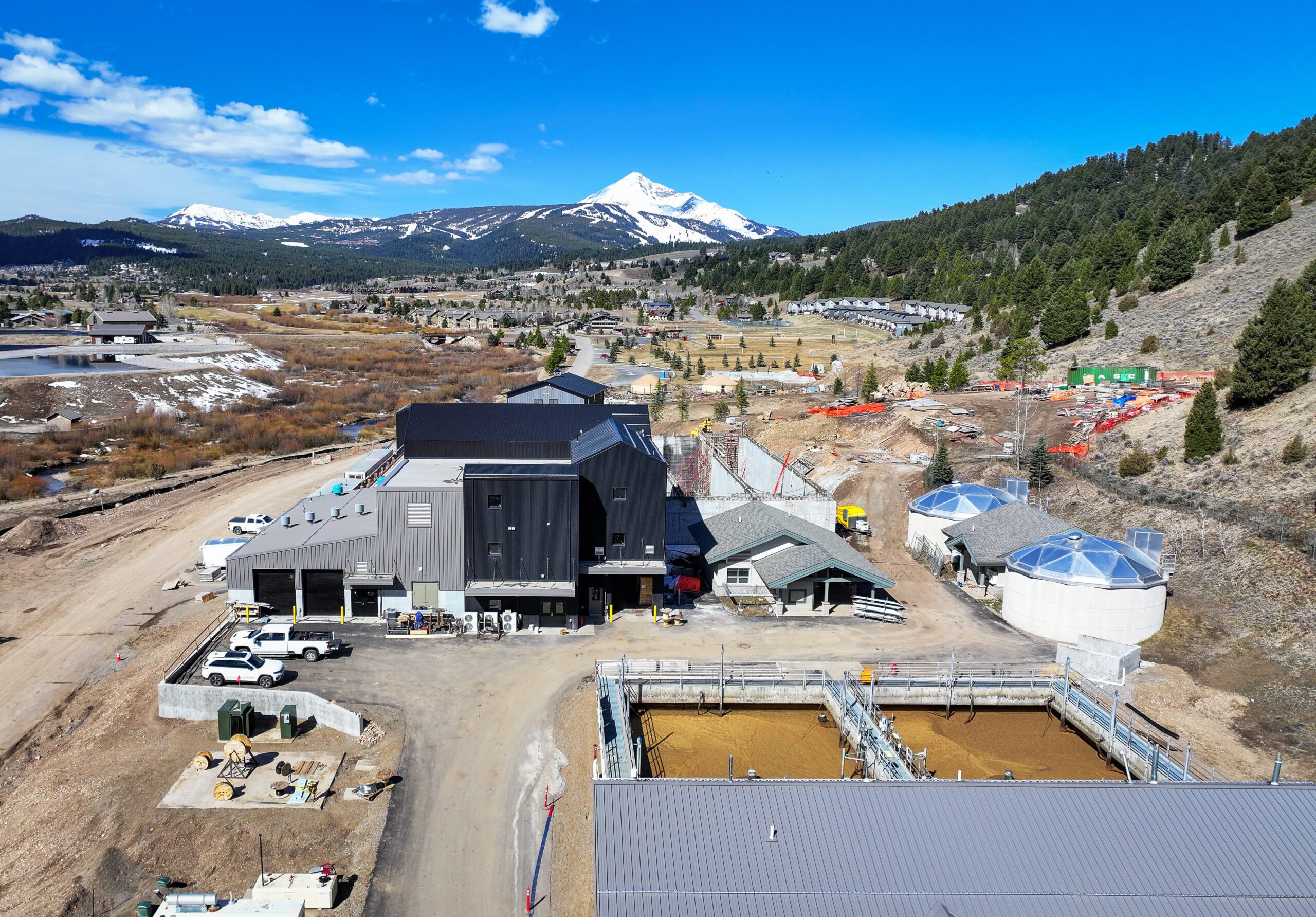
“This is the biggest project I’ve ever done, and it’s been the best one between engineer, contractor and [the water and sewer district],” Ron Edwards, general manager of the Big Sky County Water and Sewer District, told EBS during a WRRF tour on April 12. He plans to retire from a three-decade Big Sky career when the plan is completed between October and December of 2024.
Construction on the WRRF began in June 2021.
“You walk on deck now, and this looks like a wastewater treatment plant. For the longest time, it looked like a warzone out here with construction activity,” Edwards said.
WRRF Operator Justin Brechtelsbauer said “it’s a big step up” from the existing, 20-year-old plant. The new one equips operators with state-of-the-art SCADA computer controls, allowing operators to track and manage systems remotely, and run simulations.
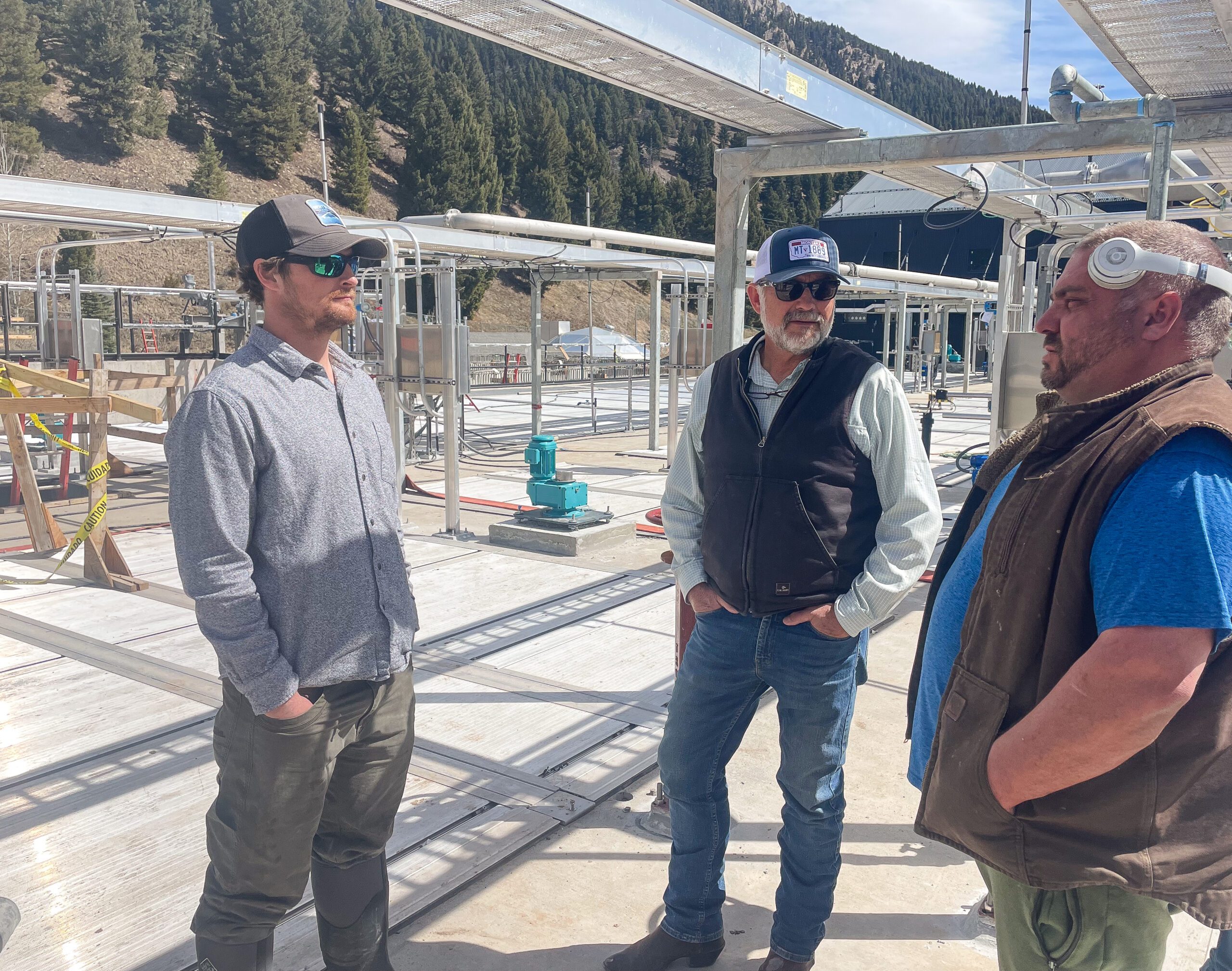
“You’re going from a Buick to a Ferrari,” Edwards said. He commended the district’s talented operators, like Brechtelsbauer who has almost three decades of industry experience.
Brechtelsbauer added, “We have a lot of tools in order to make this plant run right.”
Quantity and quality
The new WRRF is rated to treat up to 1.4 million gallons per day, a maximum only expected during April and May—peak months due to snowmelt infiltration. On average, the WRRF can manage a capacity of 960,000 gallons per day, almost 50% more than the existing SBR, which was designed in 2001 for 650,000 gpd.
The district chose to build the foundation and framework for another WRRF section as a potential add-on in years to come. Eventually, at full build, the new plant could sustain maximum daily sewage roughly equivalent to a population of 30,000, according to Johnny O’Connor, Edwards’ replacement as BSCWSD general manager.
“Gives you some idea of the flow capacity of the plant,” O’Connor said during the district’s April 16 board meeting. Engineer Scott Buecker, with contractor AE2S, said the upgraded capacity should be plenty for projects like the Gallatin Canyon County Water and Sewer District and Big Sky’s continued development.
In addition to the significant capacity upgrade, the treatment quality will be “insanely clean,” according to Zach Frieling, process engineer with contractor AE2S.
“It’s gonna be a lot better for the environment, provides more options for reuse,” Frieling said while guiding EBS on a WRRF tour.
The water will be treated to Class A-1, which Edwards says meets drinking water standards. No plans exist yet for direct potable reuse or indirect aquifer recharge, but those options are now on the table. The legal health standard for drinking water is 10 milligrams per liter of nitrogen.
“We’ll be half that,” Edwards said, and Frieling confirmed: effluent will typically contain no more than 5 milligrams per liter, a strong reduction over the existing plant’s output which ranged from 15 to 30 mg, higher during the winter months when cold temperatures hampered the SBR treatment process.
Even in the winter, the new WRRF is better insulated to still keep nitrogen below 5 milligrams per liter.
“So, it’s a big difference,” Edwards said.
Frieling emphasized that no effluent is discharged into the Gallatin River—it never has, in Big Sky—and it will continue to be reused, only now to a higher quality.
The difference might be noticeable as soon as this summer.
Until now, the amount of reclaimed water that could be reused for irrigation—golf courses, primarily—was limited based on nitrogen output. With the new WRRF, Edwards said the grass couldn’t possibly absorb enough water to reach nitrogen limits.
“You’d need to throw half a billion gallons on the golf course to hit those numbers… It’s an unattainable amount, we can’t possibly do it,” Edwards said. “So it’s a game changer.”

In Tuesday’s board meeting, project engineer Scott Buecker explained that the WRRF’s forthcoming effluent will now begin to dilute the existing treated sewage—relatively rich in nitrogen—that remains to be drawn from the district’s holding ponds for reuse.
But by mid-summer, the combined product should be increasingly pure.
“Nitrogen shouldn’t be the limiting factor on irrigation ever again, really,” Buecker said, noting that it’s a long-awaited benefit after six or seven years of planning, funding, design and construction.
“I don’t want to spike the football yet, but to get to this point is a big deal,” Buecker said.
Walking through the WRRF, Edwards emphasized that the Big Sky Resort Area District committed about $27 million for this project—dollars collected largely from visitors through the additional “1% for infrastructure” resort tax on luxury goods and services, approved by voters in January 2020.
“The size of this plant is driven by the population we see with all the visitors coming, so I think it’s a fair ask to have resort tax participate,” Edwards said.
The $50 million price tag is not strictly due to size and capacity, but also the commitment to treatment quality. Frieling and Edwards proudly tout the WRRF’s complicated technology.
Frieling jokes that WRRF operators are just bacteria farmers, seeding and growing the right balance and density of “bugs” to consume nutrients in wastewater. The bacteria came from Bozeman’s wastewater treatment plant, which has a similar design.
“They have a really good bacteria that we want,” Frieling said. It required truckloads through Gallatin Canyon, carrying 80,000 gallons of seed sludge.
Now that the plant is up and running, operators are responsible for keeping the right balance.
“You’re making sure all your bacteria is happy, it’s eating, it’s treating the water,” Frieling said. With the right balance, the wastewater plant should smell “earthy,” but a foul aroma isn’t common and usually indicates an imbalance.
A supercomputer lives below deck. It’s a mess of wires and blinking lights, shrouded in a whirring sound, and they are responsible for automatically turning components on and off—Edwards calls it “the brain” of the plant. The required computer chips and mainframe were largely responsible for a six-month delay in 2023.
“For me, this will be the most complicated wastewater plant that I have ever worked on,” said James Sletten, AE2S process engineer who manages the SCADA systems. He spoke loud over the computer noise.
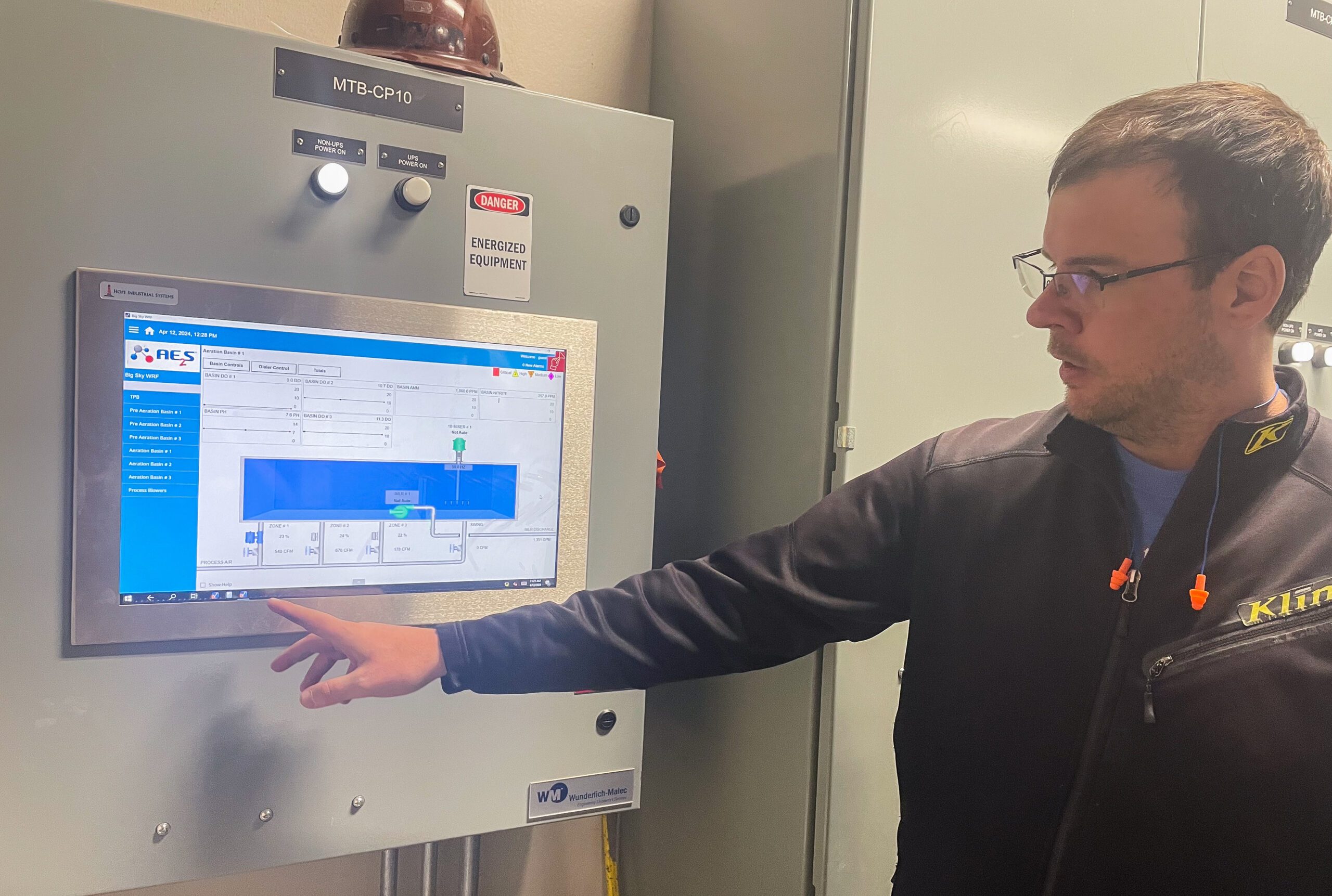
“So, just from all the processes, the advanced control, the basins that are out there—there’s 21 [computer systems] trying to run that whole thing… Getting them to balance and all do their job at the same time can be challenging.”
Before raw sewage reaches the tanks of bacteria, a series of heavy equipment filters out particles—operators emphasized the trouble caused when customers flush or drain anything except toilet paper, even so-called “flushable” wipes which don’t dissolve.
“If people were more cognizant of what can actually be flushed down a drain, we could maybe downsize this and save taxpayer money,” Frieling said.
Those materials, even tiny particles, are removed and taken to Logan Landfill.
“At the end, it’s just basically nutrients. All the floating chunks, every little piece is screened out. At the end, it’s just water, nitrogen and phosphorus,” Frieling said. And then the bacteria goes to work.

The WRRF is an impressive symphony of mechanical and electrical components under human supervision. Still, most people will never care to see inside the WRRF, so the district made a point of designing its exterior to blend in, using a grain-elevator theme.
“It’s definitely the best-looking wastewater plant with the prettiest view,” Frieling said.
“By far,” Edwards added. “It really is, and obviously it adds to the cost of this, but we felt—and my board also felt—it’s important that you build something that kind of fits with Big Sky.”



